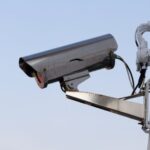According to a recent post on the website for the Australian Information Commissioner (OAIC), controversial facial recognition startup Clearview AI violated the privacy of Australians when it collected their biometric data from social media platforms for use with its facial recognition tool and database.

In an explosive front page story in the The New York Times in January of 2020, Clearview was revealed to have scraped the web including popular sites such as Twitter, Facebook, and Youtube, to build a database of millions upon millions of faces.
The report also revealed that the company had targeted law enforcement agencies around the world to sell its facial recognition database and solution to without the consent of the companies it took the images from, nor the individuals whose biometric data was collected from those images.
This ruling from the OAIC — the latest in a long list of rulings against Clearview — follows an investigation conducted jointly with the UK’s Information Commissioner’s Office (ICO).
Australian Privacy Commissioner Angelene Falk arrived at the ruling after a review of the Australian Privacy Act of 1988 that revealed that Clearview was in violation of the Act for collecting Australian’s sensitive information without their consent, for collecting this information by ‘unfair means’, and for not taking reasonable steps to notify those individuals that their information had been collected.
Commissioner Falk’s ruling orders Clearview to cease its practice of collecting the biometric data and facial images of individuals in Australia, and to destroy what they have already collected from within the country
“The covert collection of this kind of sensitive information is unreasonably intrusive and unfair,” Commissioner Falk said. “It carries significant risk of harm to individuals, including vulnerable groups such as children and victims of crime, whose images can be searched on Clearview AI’s database.”
While the OAIC findings were released earlier this week, the ICO is reportedly ‘considering its next steps’ while seeking what formal regulatory action it can take under the privacy protection laws of the UK.
To read the full report, visit the OAIC website.
–
November 9, 2021 — by Tony Bitzionis








Follow Us